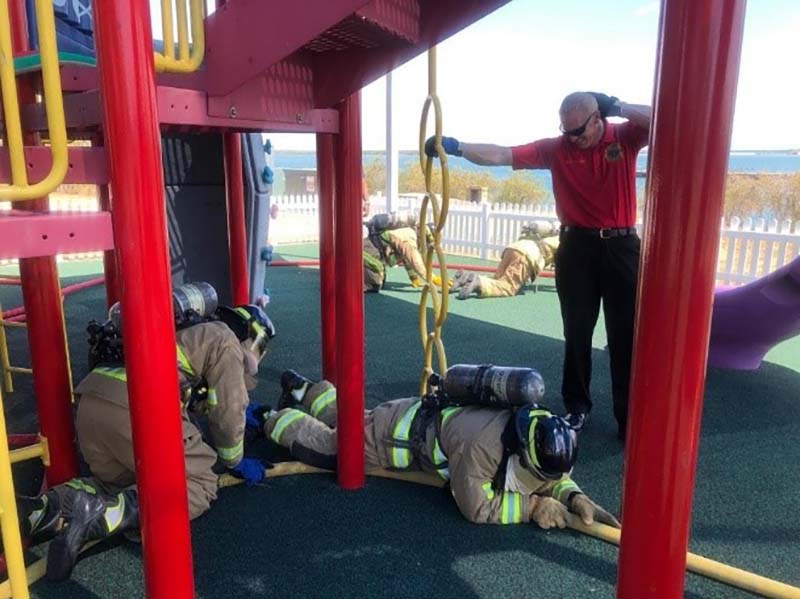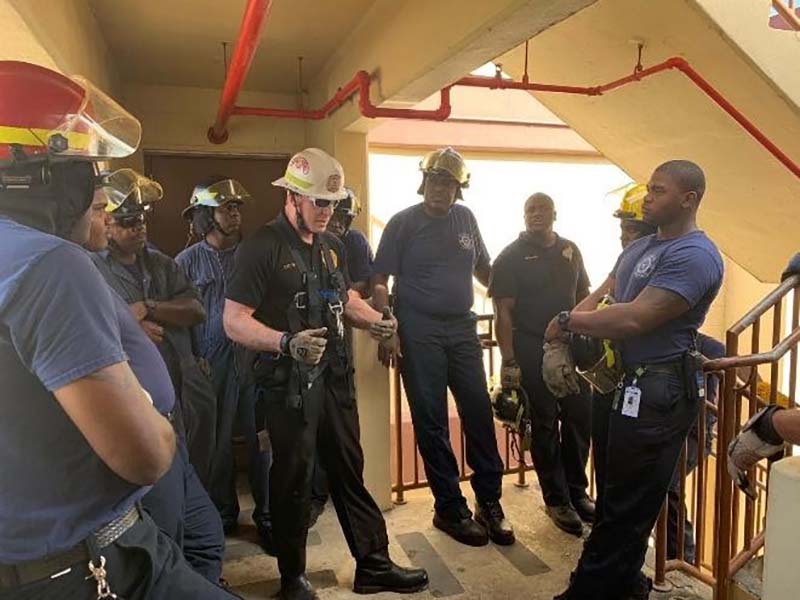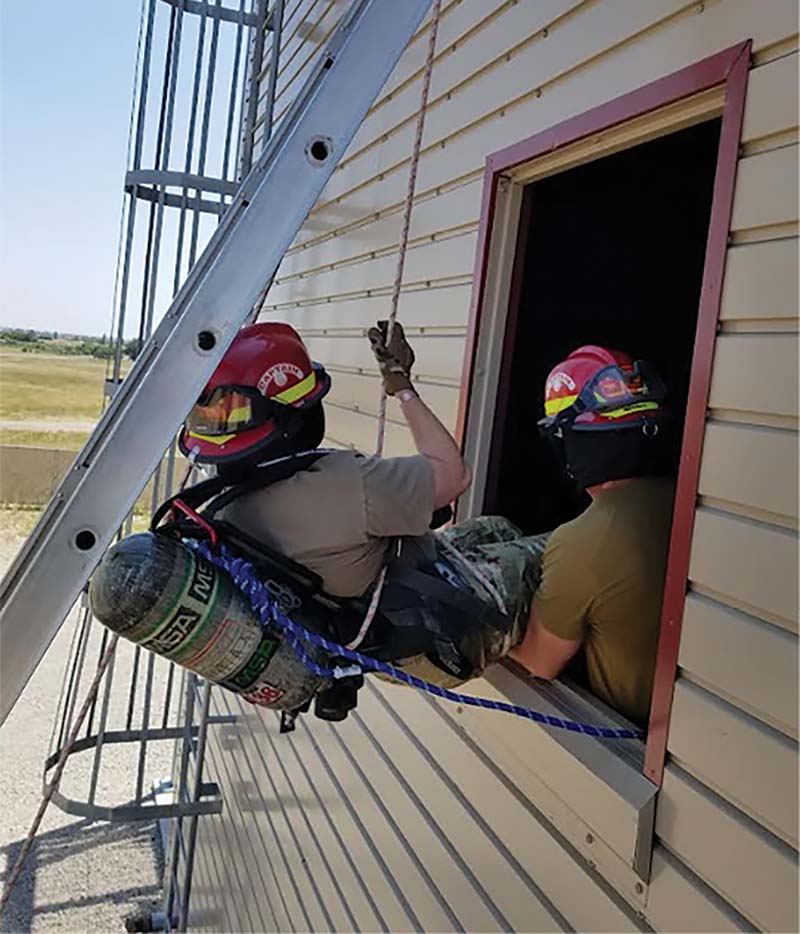TRAINING NOTEBOOK ❘ By JOSHUA S. SARTERS
Where do you see yourself in our fire service? How do you want to be remembered? What legacy do you want to leave? How do you use your platform to make others individually better for the improvement of the whole? All fire department training officers should ask themselves these questions at every level. Knowing the answers will enable the true training officer to make an impact on this great fire service and be a champion for personnel!
You must first establish trust, the foundation of all things in training. You, as the training officer, must establish trust between the assigned personnel within the organization and you. Get to know your personnel and allow them to get to know you. If you don’t, you will never realistically know the needs of the people in your organization and, therefore, can’t be an effective change agent on the desired platform.
TRUST
Trust means the following:
Today, each of us will give our best.
Respect will spread from all of us.
Unstoppable passion will guide us.
Steadfast unity will hold us up and help us through challenges.
Together we can and will succeed.
Trust each other, and anything is achievable.
The training officer has many tools he can use that will aid in establishing trust; every department’s needs are different. In the words of one of my great mentors, Chief Sean Merrill, the district fire chief for Navy Region Northwest Fire & Emergency Services in Washington state, “There are no cookie-cutter tactics.” You have to step outside of your box to allow others to step outside of theirs; letting people in allows them to let you in. Once you have secured that trust, only then will you be able to make the desired impact and be that champion.
My training approach includes the six-part “Firefighter Survival Series,” “Teambuilding Fridays,” and “Train with the Chief.” These trust-encircling, team-building exercises/drills not only test the individual but emphasize the need for one another in a team-based dynamic. This is easier said than done. Remember, the first step is for you as the training officer to step outside of your box. Hands-on is the key. In each training evolution, be the first to show them how to do what you want them to do. Seeing a leader, mentor, or trainer put himself out there is a major component of establishing trust.
Firefighter Survival Series
Part 1: Denver Drill
Using a Denver Drill training prop is preferred. Departments and training divisions can find many different do-it-yourself plans on the internet that are very inexpensive to build. Members train in full gear and self-contained breathing apparatus (SCBA) eventually but not initially.
Don’t make the drill too challenging too quickly. Once your members have the techniques down, add in the mask and breathing air to make it even more challenging. Training segments include How a Training Tower Works, Feet First/Head First, and It’s All about Technique and Not Muscle (photo 1).

(1) Photo by author.
Part 2: Disoriented Firefighter
This requires the use of a playground and 200 feet of charged 1¾-inch hose. Training segments include Bump, Bump to The Pump and Partner Communication (photo 2).

(2) Photo by Kristina M. Sarters.
Part 3: Interior Wall Breach
Training Days: Wall Breach Maneuver
Use an old structure if available. Otherwise, a prop is easy to build. This is a self-standing wing wall, 8 feet wide × 4 feet high, built using 16-inch 2 × 4 studs and drywall. Replace drywall panels as needed for evolutions. Train on the Backward Swim and the Pack Pass-Through techniques (photo 3).

(3) Photo by Kristina M. Sarters.
Part 4: High Point Rapid Intervention Team and Self-Rescue
This employs an elevated window or balcony and rescue rope. Training includes using a ground ladder/extension ladder as a high point for lowering down firefighters from an elevated location and practicing self-rescue rope bailouts using just a single rope and friction rappel (photos 4-6).



(4) Photo by Kristina M. Sarters. (5, 6) Photos by author.
Part 5: Denver Drill at Night
Revisit the Denver Drill at night. In complete darkness, rescuers are masked up and on air, the down firefighter activates the personal alert safety system (PASS), and all lights are turned off except for rescuers’ helmet lights. The full evolution should be as loud, as dark, and as realistic as possible.
Part 6: Low-Air Survival Drill
Induce rigorous activity until the low-air PASS alarm activates, and have the firefighter go down. Time how long each firefighter takes to breathe down the remaining air. Emphasize air management, skip breathing, and mental game.
Throughout the entire series, the focus is on unity, teamwork, and encouragement. Consider leadership as a tree—the deeper and stronger your foundation of roots is, the taller and sturdier your leadership will become. Never forget your roots, and continue to pass on knowledge.
Teambuilding Fridays
One day every other week, have a teambuilding activity that centers on trust and brotherhood/sisterhood. Too often, we get so wrapped up in the day-to-day that we forget our core purpose—i.e., why we are here. Empower all levels, down to the probationary firefighter, to take a turn coming up with a new activity. This creates buy-in and ownership for the team, the shift, and the department.
The teambuilding day idea was presented to me by a quiet, humble, hardworking member, Firefighter Orain Thompson, who wanted to bring back a little bit of the brotherhood that he felt was missing. Big shout out to Thompson for having the trust to present an idea and know that his voice would be heard and listened to. Hearing someone does not necessarily mean you are listening. Allow yourself to listen to your personnel; your time and attention are among the most important facets that you can give them.
Train with the Chief
The training officer dedicates a day in which you drop everything to devote your time and energy to the most valuable asset your organization has—its members. Tap into each member’s idiosyncratic characteristics, and help them understand that all personnel have something to offer.
Positive, motivational, teambuilding attitudes are just as infectious as negativity is. Sometimes just a smile and a genuine greeting can change the pace and outcome of a single shift or training evolution. Multiple shifts or evolutions following this simple effort can alter the pace/outcome of a week, a month, a year and a career. Find the best in each other every day.
Be creative, and make training fun for the training officer, the instructors, and the learner. Enjoying the fun in training is why it’s so effective. Find the champion within you, be that champion for those around you, develop multilateral trust, grow your roots, and continue the circle of life. Striving together, your team knows no boundaries.
JOSHUA S. SARTERS is the assistant chief of operations with F.E. Warren Air Force Base Fire & Emergency Services in Cheyenne, Wyoming. In his 24 years in the fire service, he instructed on topics including firefighter I through fire officer III, technical rescue, wildland firefighting, hazardous materials response, and aircraft rescue firefighting. Since 2015, he has spoken at multiple firefighter and fire officer academies, focusing on having a passion for training, personnel management, command presence, pride and ownership, and brotherhood.

